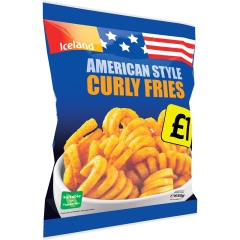Germans have a reputation for being big on potatoes. But is it deserved? We shall find out…
As for me, personally, I can take them or leave them. Probably my least favourite are boiled potatoes of the “mealy” kind, which taste of nothing and clog up your windpipe. Floury potatoes are only ever palatable with lashings of butter and/or cheese, preferably mashed. Potato crisps, chips, fries, etc … I will eat them if they’re put in front of me, but it’s not something I’d ever crave.

This is the REAL thing. Except for being boil-in-the-bag, that is… 😉
However ambivalent I might feel about spuds and potato products in general, I do have one big weaknesses: Kartoffelknödel. For those unfamiliar with them, they are the big brother of the Italian gnocchi. (Gnocchi have been, in fact, my fail safe substitute in foreign lands). It’s the texture that does it for me. They are like soft, chewy, springy putty. Gravy (there HAS to be gravy) sticks to Kartoffelknödel like iron filings to a magnet. Kartoffelknödel are a common accompaniment to German meat dishes, like pork roast and Sauerbraten.
Eastern Europe is Potato Crazy
OK, let’s get down to some figures. Which countries’ citizens consume the most fresh potatoes? I must admit, it was somewhat of a surprise to find Germany so frightfully low down on the list with just 22kg per capita in 2012. In 2007, it was still 30kg. Actually, Germany is very close to the global average of 23kg, but global consumption is slowly on the way up rather than declining. The reason for Germany’s dwindling fresh potato intake is the steadily growing popularity of processed foods, including processed potato products. Nobody wants to buy a bag of fresh potatoes anymore. I mean, they need preparation, perish the thought! Also, Germans scoff a lot of pasta and, increasingly, rice, displacing spuds as the national carbohydrate staple.

Really… you eat them like THAT?!?
As an aside – and things may have changed in the two+ decades since I left Germany – but eating a potato with the skin still on was totally unheard of back then. When I moved to the UK in the early 90’s, I was confronted with concept of “new potatoes” and baked potatoes. It was also the first time I’d seen people gobble up slices of (gasp!) unpeeled cucumber in their salads and sandwiches. I had clearly landed on an island inhabited by Pleistocene heathens. To my great relief, they did pull the skins off their bananas before biting into them, so not all was lost, as far as I could tell.
Back to the stats: Trumping the fresh potato consumption charts is the Ukraine, with 143kg per person in 2012. Now, this sounds like some serious potato load, but it’s an underestimate, because potatoes grown on allotments/datchas etc, destined for private consumption, which never enter the formal market place, are excluded from these figures. Poland managed 116kg, and Russia 70kg. Incidentally, Peru, birthplace of the tuber, stood at 79kg per head.
Irish spud intake almost pales into insignificance by comparison, with 47kg and a falling tendency, but Ireland is still ahead of the UK’s 30kg. The US, shock horror, barely musters half of that! But we all know why: fries.

Screwed-up potatoes…
Next, let’s look at frozen processed potatoes. This includes potato chips for oven baking, potato waffles, croquettes, etc. The UK leads world per capita consumption with 21kg in 2013, followed by Australia and Canada (both 19kg), and the US (15kg).
Where potato crisps/chips are concerned, the surprise global leader turns out to be Norway, with a per capita intake of just over 4kg per head in 2013. Hot on its heels are the UK, Canada, Ireland, the Netherlands, followed by the US and Spain. In Spain, a small plate of “free” potato chips is usually served with drinks in places that can’t be bothered to do proper tapas. It’s always a total disappointment for me 😦
Anyway, let’s hear it from everybody else – what’s your fave potato product that you couldn’t live without?












